Rank Species | Genus Aconitum Higher classification Wolf's bane | |
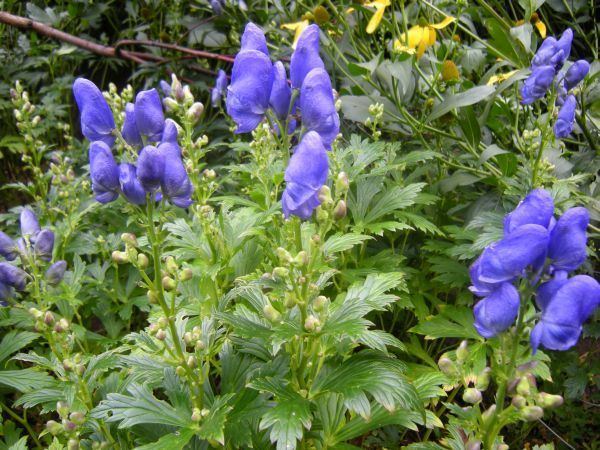 | ||
Similar Wild ginger, Wolf's bane, Glycyrrhiza uralensis, Bai zhu, Wolfiporia extensa | ||
Aconitum carmichaelii variety monkshood
Aconitum carmichaelii syn. A. fischeri, is a species of flowering plant of the genus Aconitum, family Ranunculaceae. It is native to East Asia and eastern Russia. It is commonly known as Chinese aconite, Carmichael's monkshood or Chinese wolfsbane (Chinese: 烏頭附子; pinyin: Wu-tou Fu-zi) (Japanese: 鳥兜 or トリカブト, Torikabuto). It is known in Mandarin as Fu Zi (meaning daughter root, or lateral root) and as Wu Tou (meaning tuberous mother root, or root tuber).
Contents
- Aconitum carmichaelii variety monkshood
- Description
- Biological effects
- Toxicology
- Chemical constituents
- Synonyms
- References
Description
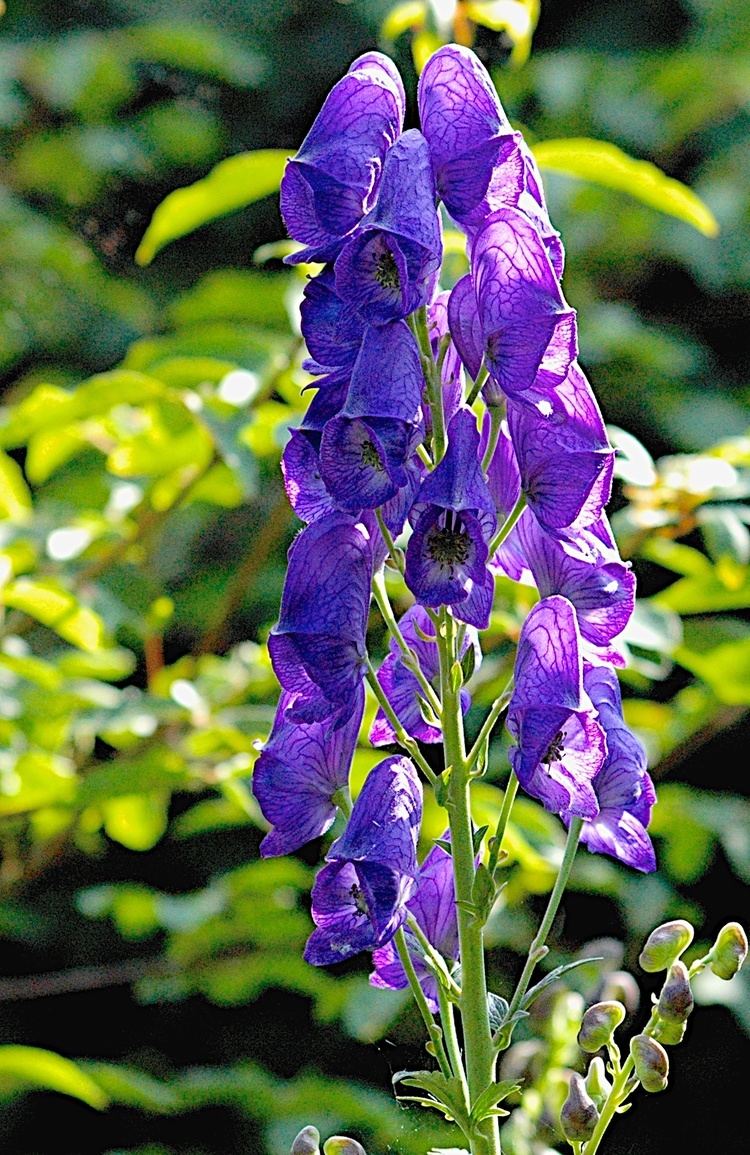
Growing to 1.2 m (4 ft) tall by 30 cm (12 in) wide, it is an erect perennial, with 3- to 5-lobed ovate, leathery leaves. Dense panicles of blue flowers are produced in late summer and autumn.
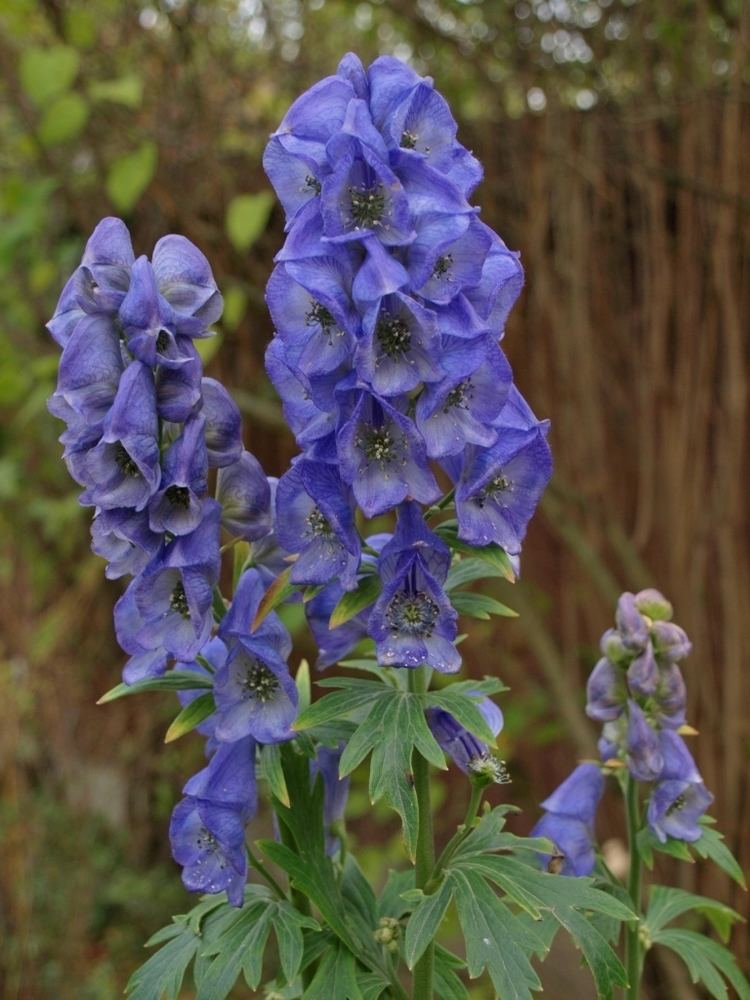
It is valued as a garden plant, and numerous cultivars have been developed, of which 'Arendsii' and 'Kelmscott' (Wilsonii Group) have gained the Royal Horticultural Society's Award of Garden Merit.
Biological effects
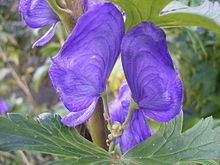
All parts of this plant are extremely toxic, and it has historically been used as a poison on arrows. If not prepared properly by a trained person, Aconitum can be deadly when taken internally.
Toxicology

Marked symptoms may appear almost immediately, usually not later than one hour, and "with large doses death is almost instantaneous." Death usually occurs within two to six hours in fatal poisoning (20 to 40 mL of tincture may prove fatal). The initial signs are gastrointestinal including nausea, vomiting, and diarrhea. This is followed by a sensation of burning, tingling, and numbness in the mouth and face, and of burning in the abdomen. In severe poisonings pronounced motor weakness occurs and cutaneous sensations of tingling and numbness spread to the limbs. Cardiovascular features include hypotension, sinus bradycardia, and ventricular arrhythmias. Other features may include sweating, dizziness, difficulty in breathing, headache, and confusion. The main causes of death are ventricular arrhythmias and asystole, paralysis of the heart or of the respiratory center. The only post-mortem signs are those of asphyxia.

Treatment of poisoning is mainly supportive. All patients require close monitoring of blood pressure and cardiac rhythm. Gastrointestinal decontamination with activated charcoal can be used if given within one hour of ingestion. The major physiological antidote is atropine, which is used to treat bradycardia. Other drugs used for ventricular arrhythmia include lidocaine, amiodarone, bretylium, flecainide, procainamide, and mexiletine. Cardiopulmonary bypass is used if symptoms are refractory to treatment with these drugs. Successful use of charcoal hemoperfusion has been claimed in patients with severe aconite poisoning.
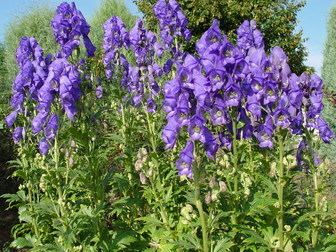
Poisoning may also occur following picking the leaves without wearing gloves; the aconitine toxin is absorbed easily through the skin. In this event, there will be no gastrointestinal effects. Tingling will start at the point of absorption and extend up the arm to the shoulder, after which the heart will start to be affected. The tingling will be followed by unpleasant numbness. Treatment is similar to poisoning caused by oral ingestion.
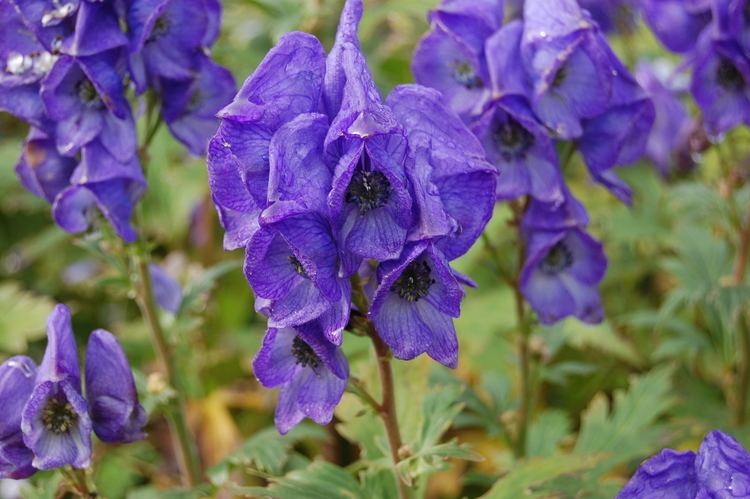
Aconitine is a potent neurotoxin that opens tetrodotoxin-sensitive sodium channels. It increases influx of sodium through these channels and delays repolarization, thus increasing excitability and promoting ventricular dysrhythmias.
Chemical constituents
The LD50 of aconitine in mice was 0.295 mg/kg SI, and that of the prepared decoction is 17.42 g/k. A lethal dose of aconitine is 3–4 mg.
Violdelphin is an anthocyanin, a type of plant pigment, found in the purplish blue flower of A. chinense.
